Take a look back at the Broncos' draft history when it comes to running backs, including Terrell Davis and Floyd Little.

Montee Ball (2013 - second round, 58th overall) jumps past Chiefs cornerback Ron Parker during a game on Sept. 14, 2014.

Ronnie Hillman (2012 - third round, 67th overall) tries to stay upright after a hit from 49ers cornerback Tramaine Brock during a matchup on Oct. 19, 2014.
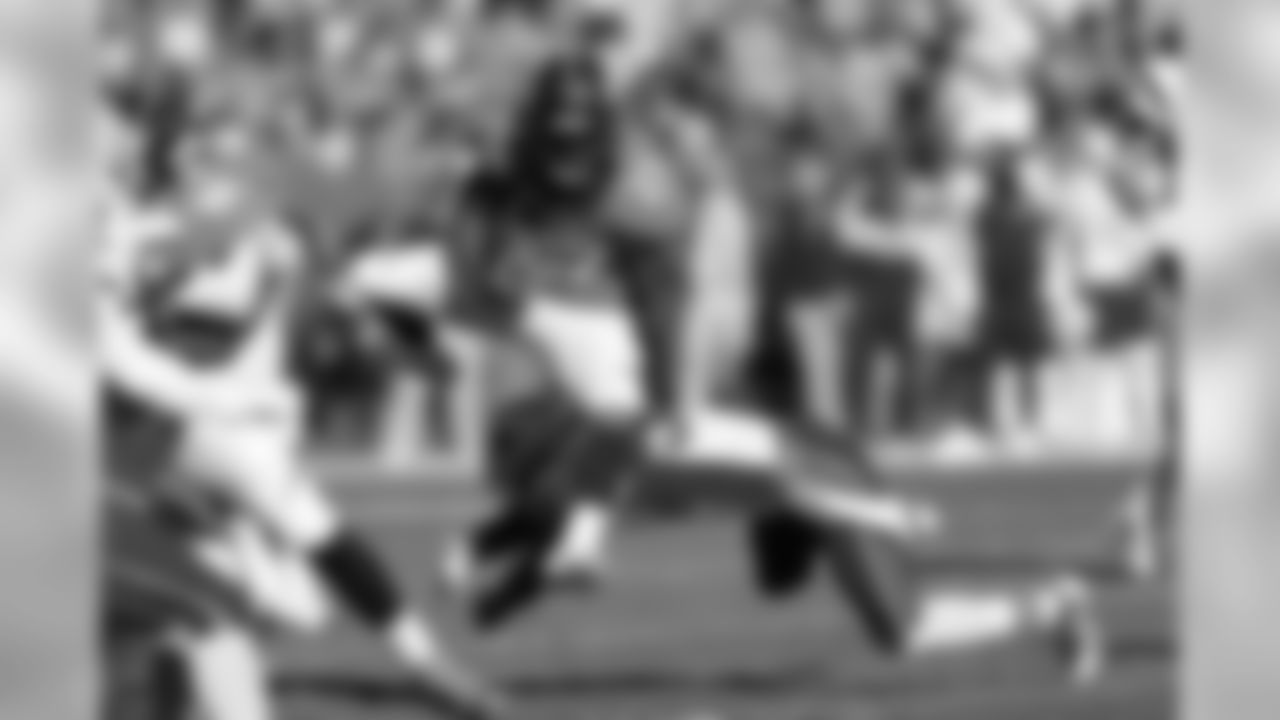
Knowshon Moreno (2009 - first round, 12th overall) hurdles Patriots defensive back Duron Harmon in the 2013 season AFC Championship.
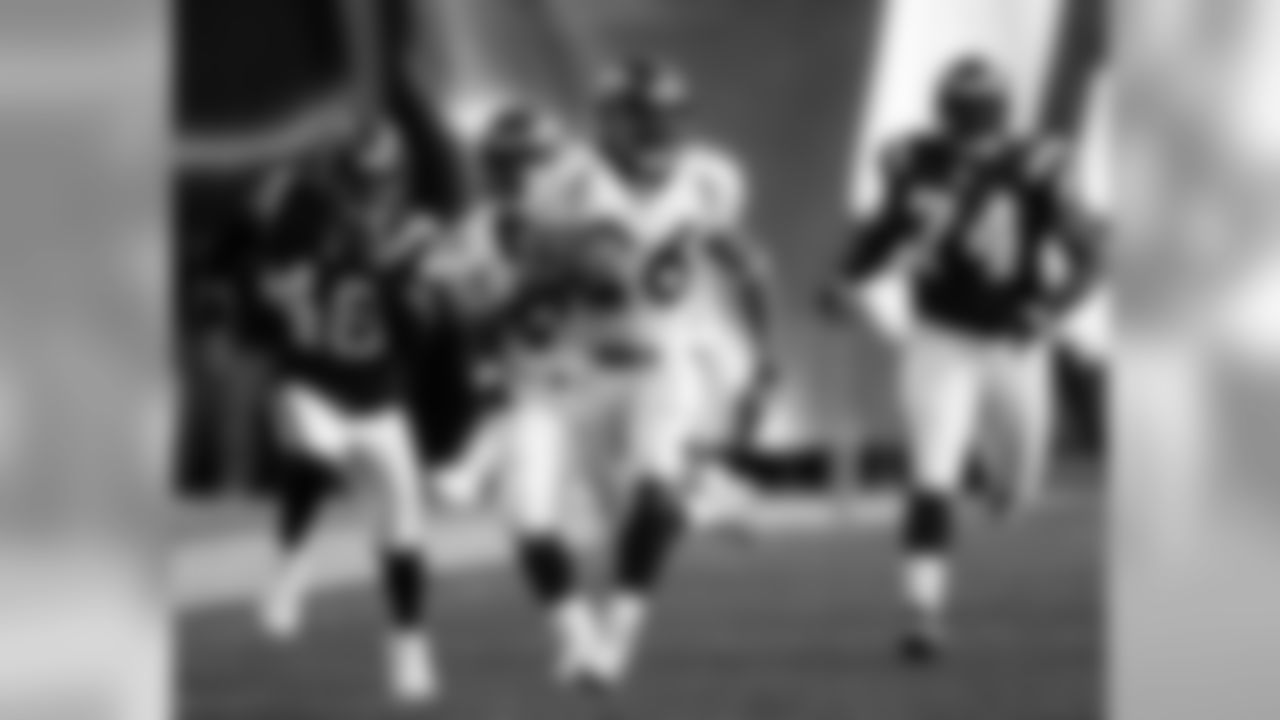
Tatum Bell (2004 - second round, 41st overall) returns a kickoff for a touchdown against the Chargers in 2006.

Clinton Portis (2002 - second round, 51st overall) escapes a tackle by Raiders linebacker Rod Coleman.

Mike Anderson (2000 - sixth round, 189th overall) extends a Mile High Salute to the Broncos faithful after scoring a touchdown against the Patriots in 2006.
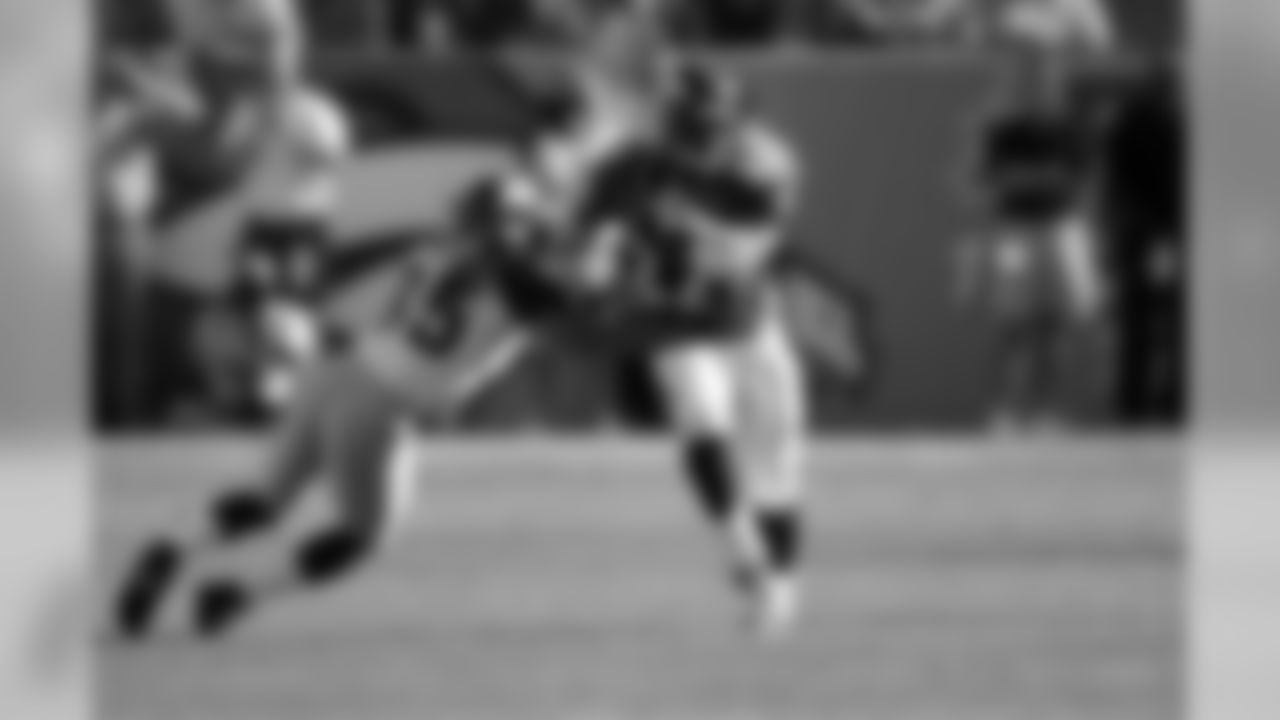
Olandis Gary (1999 - fourth round, 127th overall) breaks a tackle against the Rams on Sept. 8, 2002.

Detron Smith (1996 - drafted in the third round, 65th overall) returns a kickoff against the Chargers at Mile High Stadium on Nov. 19, 2000.

Terrell Davis (1995 - round 6, 196th overall) finds a hole and cuts upfield against the Giants on Sept. 10, 2001.

Gerald Willhite (1982 - first round, 21st overall) leaps over a Kansas City defender during a game on Sept. 18, 1988.
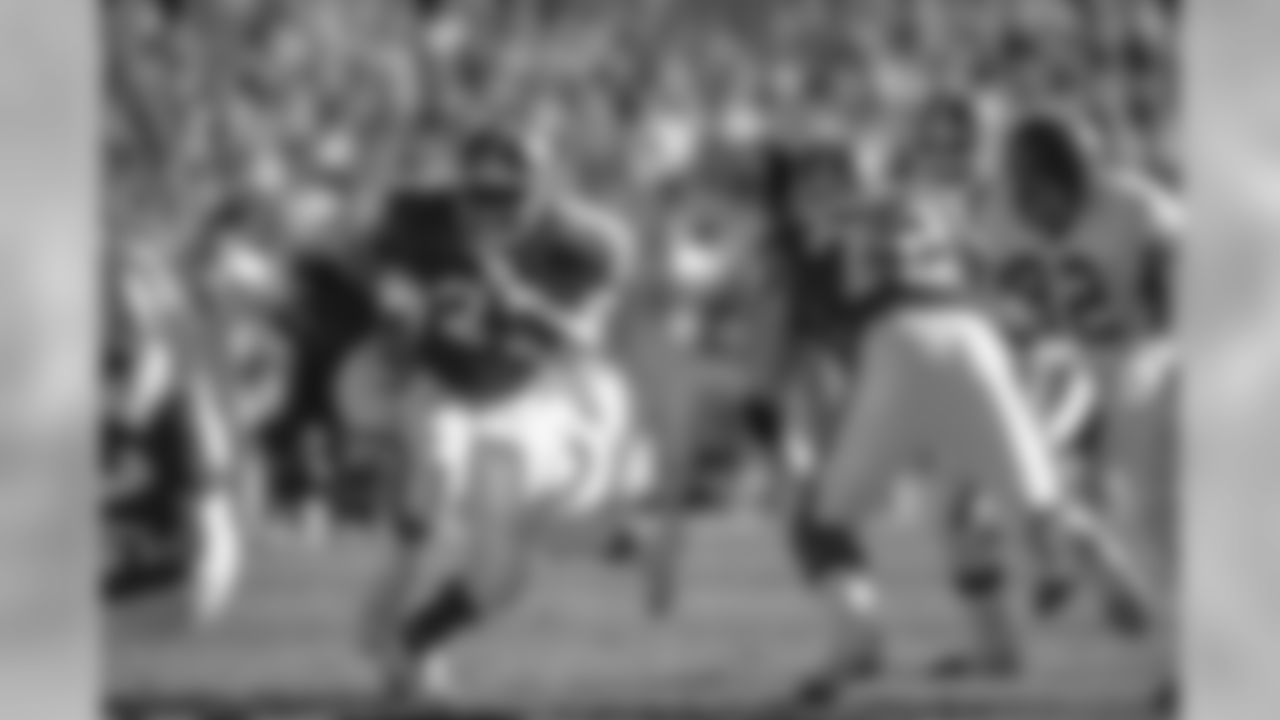
Sammy Winder (1982 - fifth round, 131st overall) runs upfield against the Cleveland Browns in the 1990 AFC Championship.

Rick Upchurch (left) shares a laugh with Otis Armstrong (1973 - first round, ninth overall) on the sidelines .

Bobby Anderson (1970 - first round, 11th overall) tries to split two Steelers defenders on a screen pass on Nov. 28, 1971.
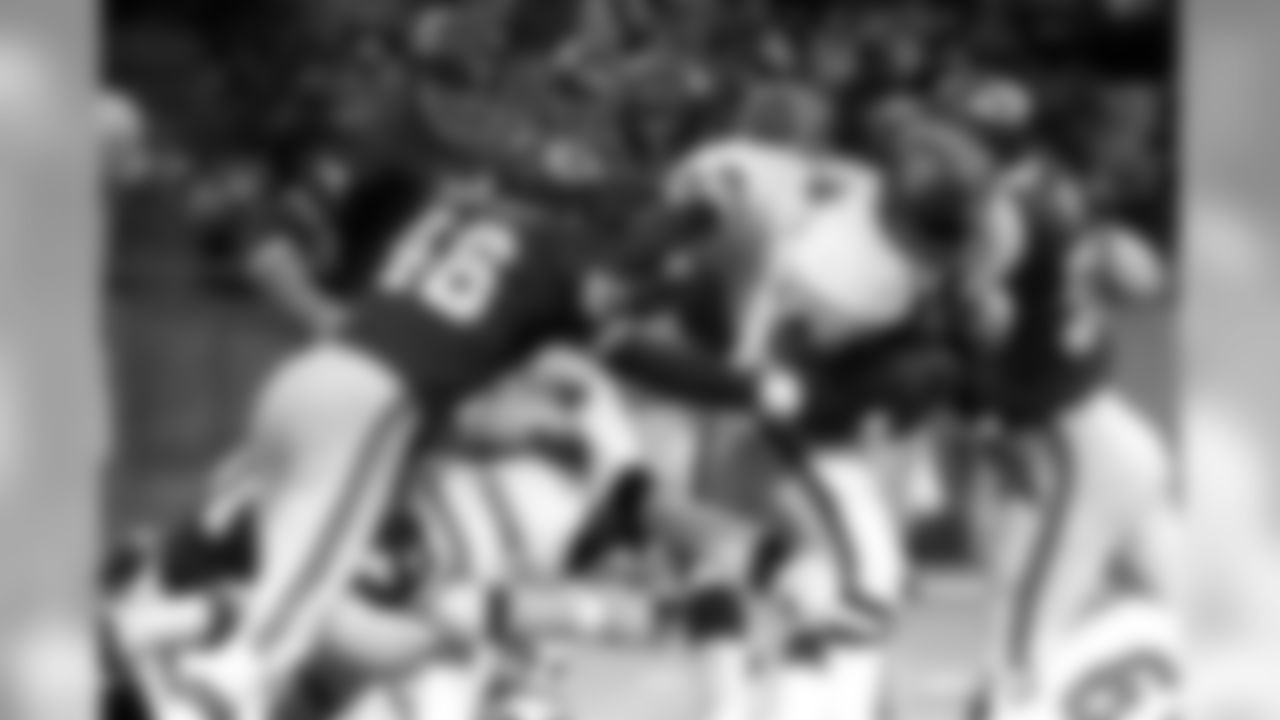
Floyd Little (1967 - first round, sixth overall) breaks through Kansas City's line.
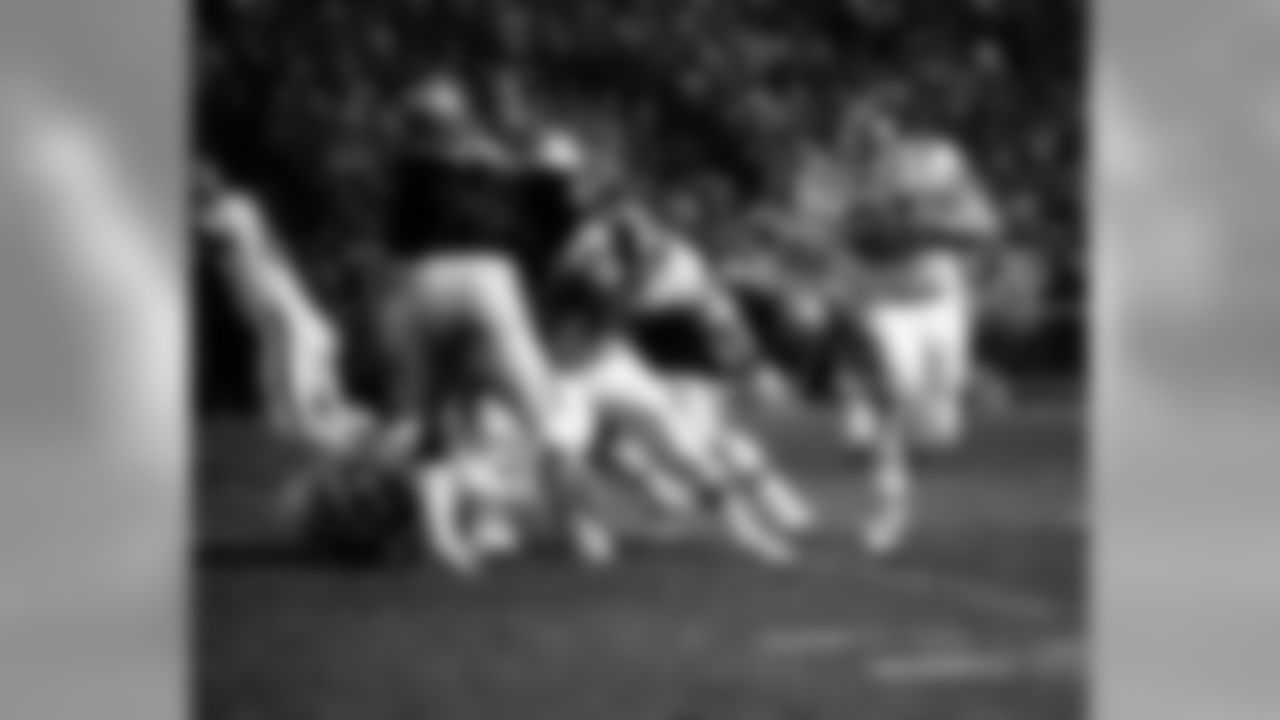
Fran Lynch (1967 - fifth round, 110th overall) sweeps to the left following his blocks against the Raiders on Dec. 8, 1975.
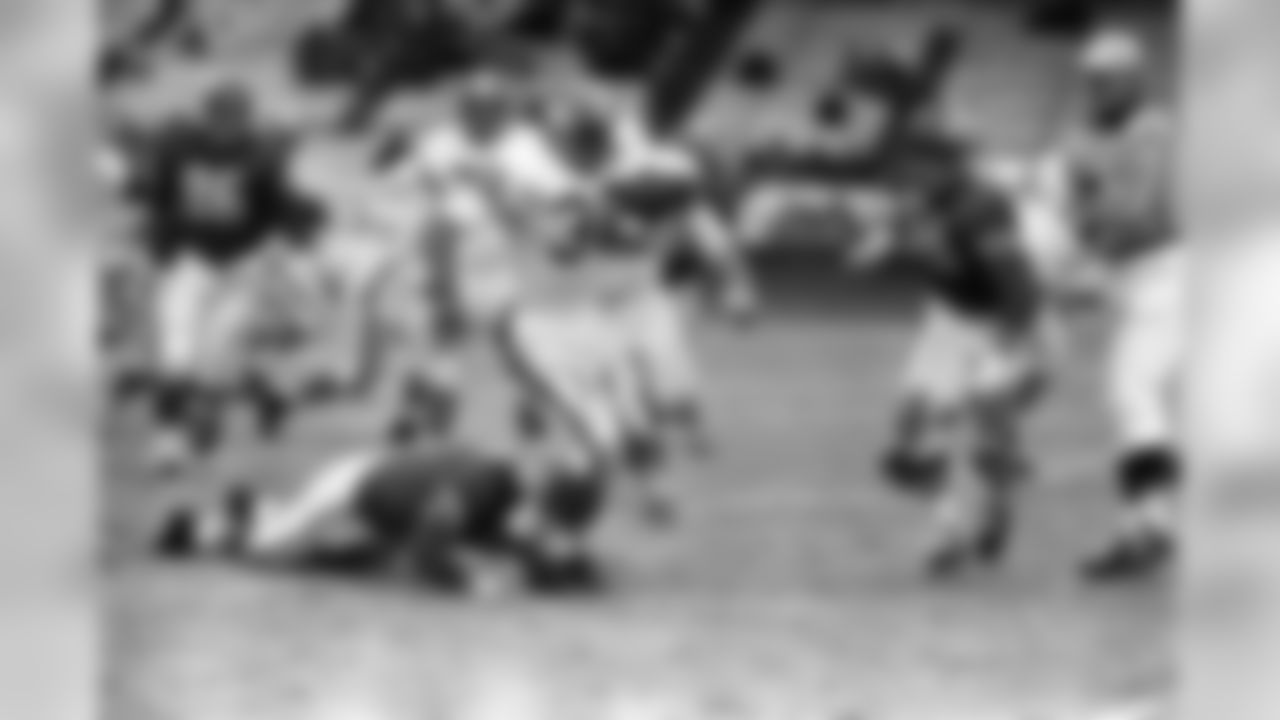
Hewritt Dixon (eighth round of the 1963 AFL Draft, 60th overall) runs into the heart of the Kansas City defense on Dec. 8, 1963.
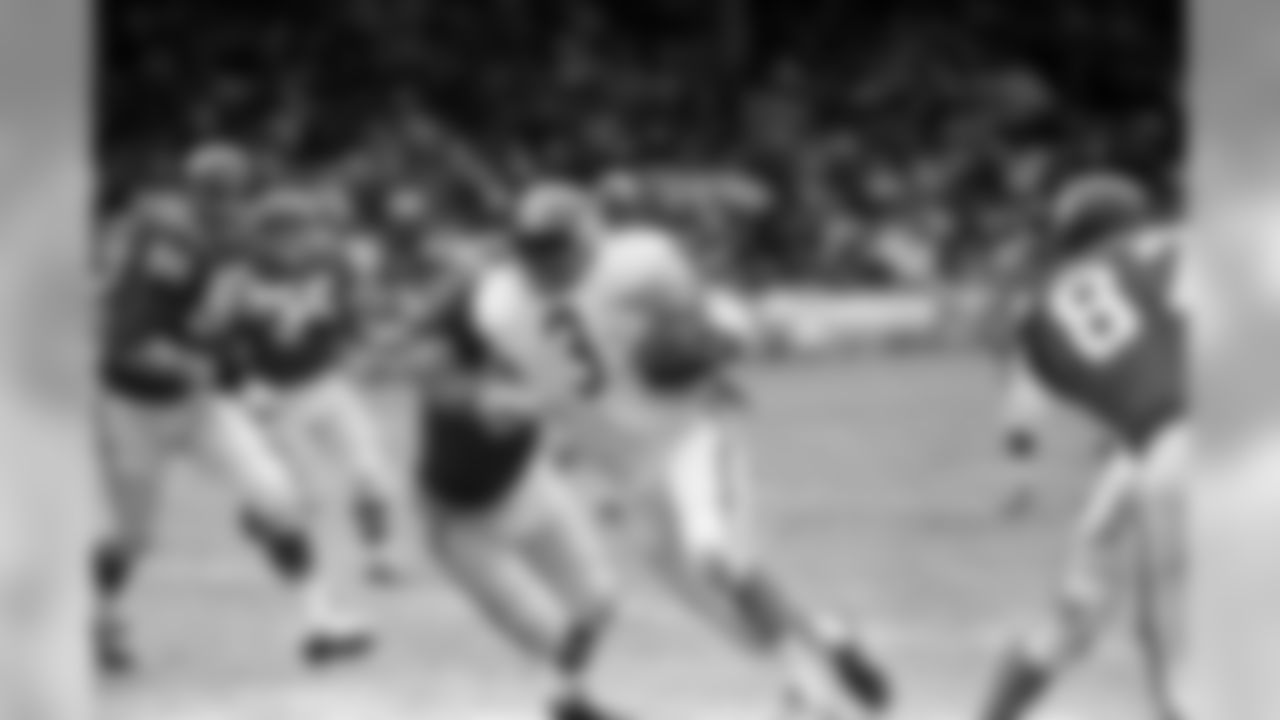
Billy Joe (round three of the 1963 AFL Draft, 85th overall) runs the ball against the Kansas City Chiefs on Dec. 3, 1963.
While it is almost impossible for a current fan to fathom, the Denver Broncos' first 13 years were horrid.
One of the persistent topics on play-by-play man Bob Martin's radio show was, "Will the Broncos ever have a winning season?"
Hard to imagine today, but true.
A part of that pattern was the draft, which had sustained the roster with a few fine players here and there (and a future Pro Football all of Famer in Floyd Little in 1967), but mostly the draft had been a series of duds for Denver.
It all changed with the arrival of John Ralston as head coach and general manager. Ralston was hired in 1972 after an outstanding career at Stanford University, including two Rose Bowl wins that really put him on the map.
He was a Dale Carnegie-power of positive thinking member and had a profound influence on the Broncos' roster via the draft. His forte turned out to be player evaluation and Ralston put most of the roster together for the first American Football Conference championship and Super Bowl XII, although those accomplishments came the year after he was let go by Denver.
The cornerstone of this roster came via the 1973 draft. The year became the one in which the Broncos turned the corner as a franchise, never to be perpetual losers again.
Go back in Broncos history with our gallery of their finest linebackers they drafted.

Denver Broncos linebacker Von Miller (58) pressures the quarterback during fourth quarter action against the Miami Dolphins in the NFL game at Sports Authority Field in Denver, CO, November 23, 2014.

Denver Broncos linebacker Danny Trevathan (59) celebrates a big play during fourth quarter action against the New England Patriots in the AFC Championship playoff NFL game at Sports Authority Field in Denver, CO on January 19, 2014.
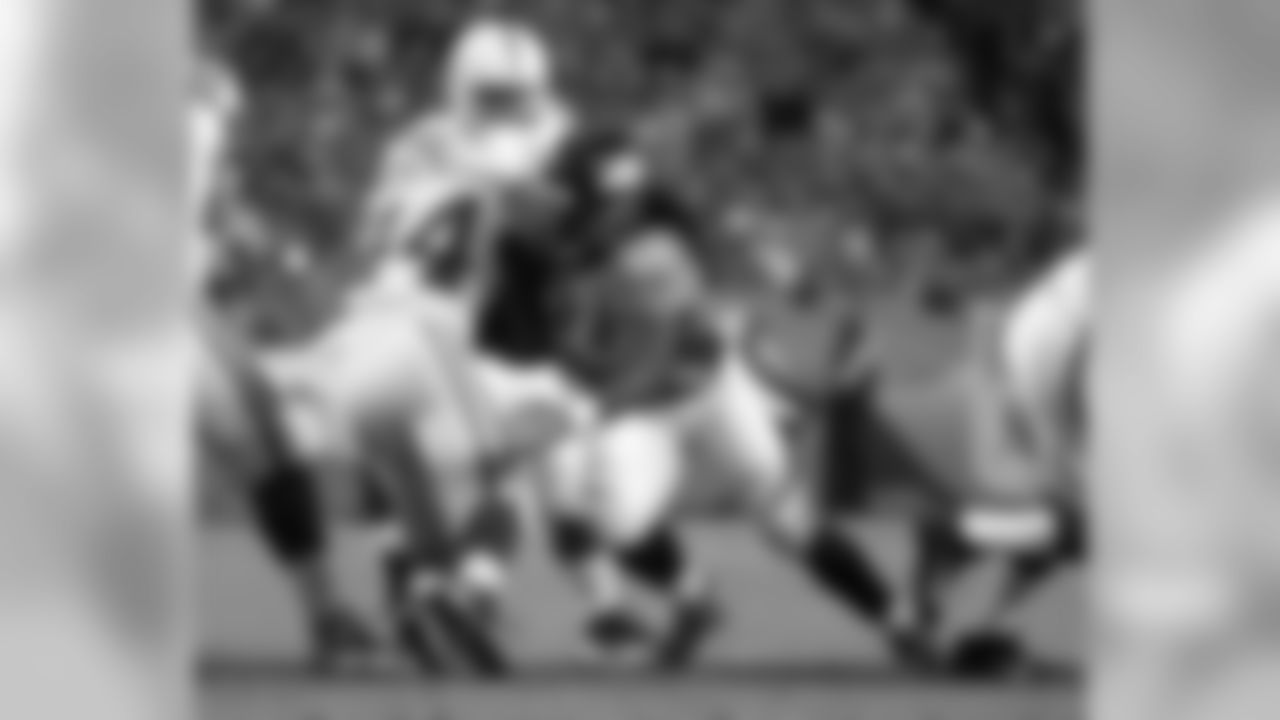
Denver Broncos linebacker Nate Irving (56) stops Indianapolis Colts running back Ahmad Bradshaw (44) during second quarter action against the Indianapolis Colts during the preseason game at Sports Authority Field at Mile High in Denver, CO, 9 07, 2014.

Linebacker D.J. Williams stops a Buccaneers running back in his tracks.
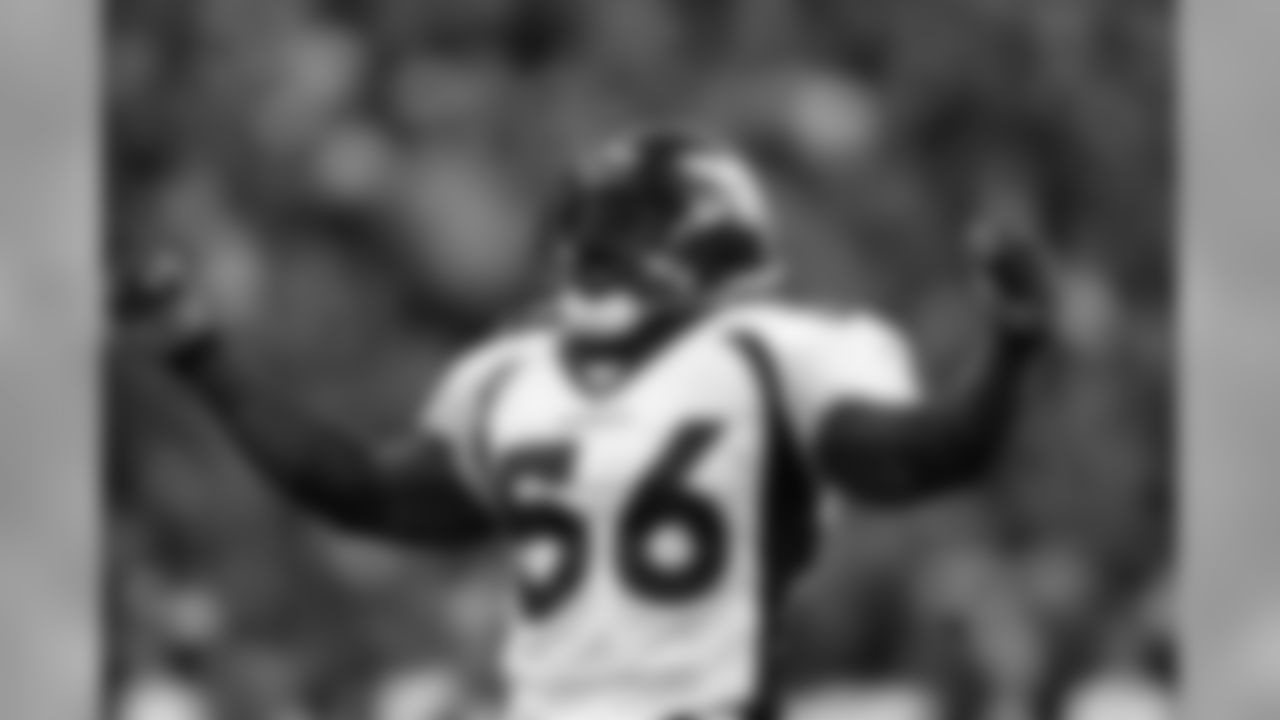
Al Wilson gets the fans pumped up against the San Diego Chargers at Invesco Field at Mile High in Denver, CO on November 16, 2003.
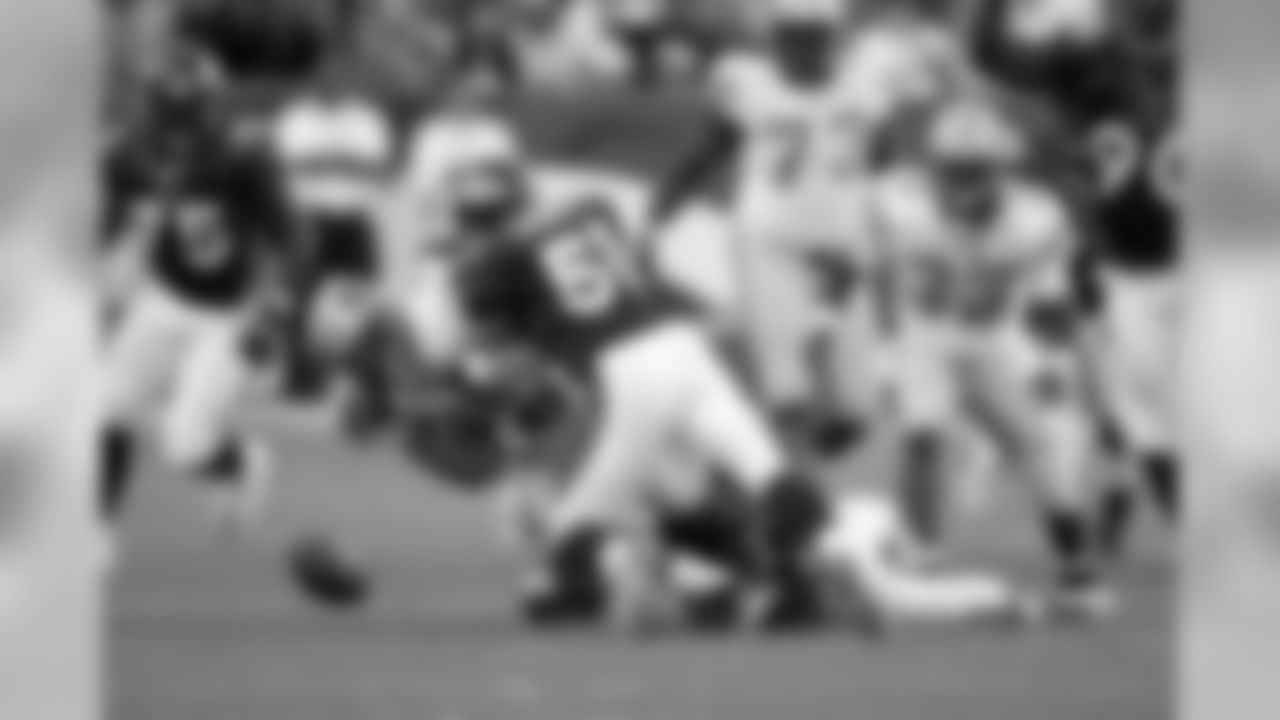
John Mobley makes a hit and forces a fumble against the Detroit Lions at Invesco Field at Mile High in Denver, CO on September 28, 2003.

Linebacker Ian Gold makes adjustments at the line of scrimmage.

Linebacker Michael Brooks watches the line in a game against the Chargers.

Linebacker Allen Aldridge helps make a tackle against the Cincinnati Bengals on Sept. 21, 1997.
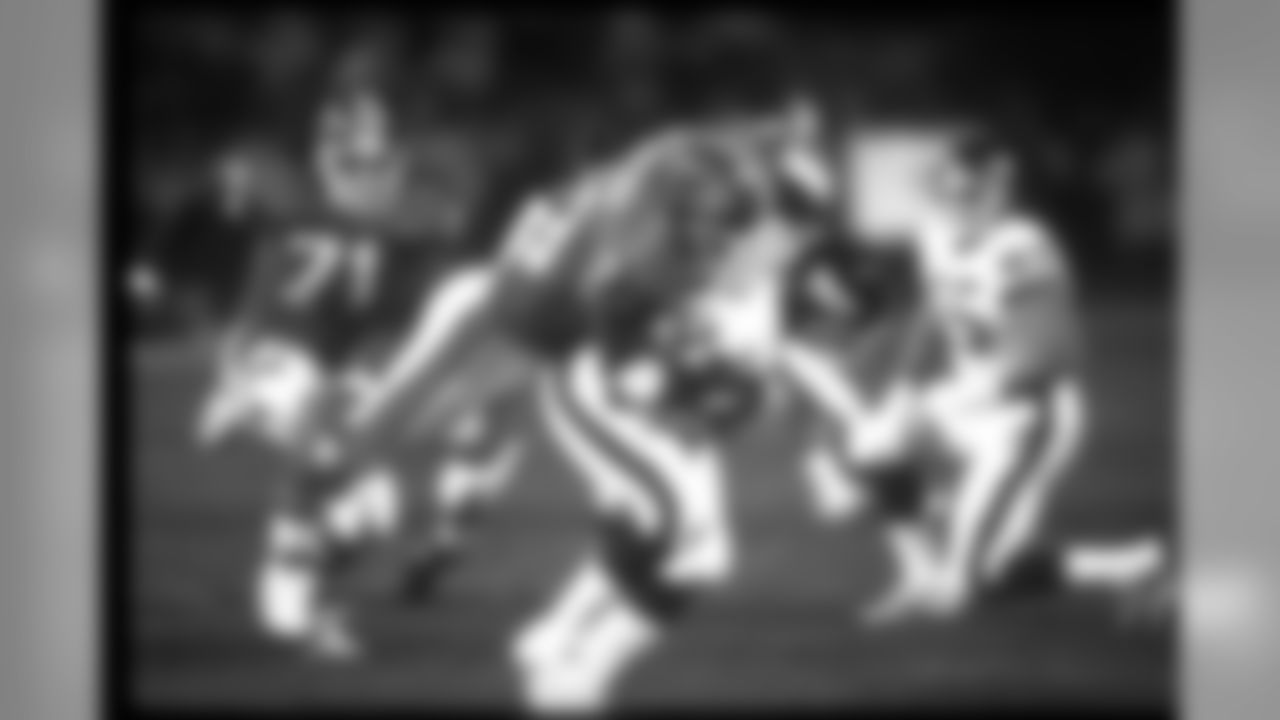
Simon Fletcher tackles the New York Giants' Jeff Hostetler.

Denver Broncos linebacker Tom Jackson (57) sacks Los Angeles Raiders quarterback Marc Wilson (6) during an NFL game in Los Angeles on October 28, 1984.
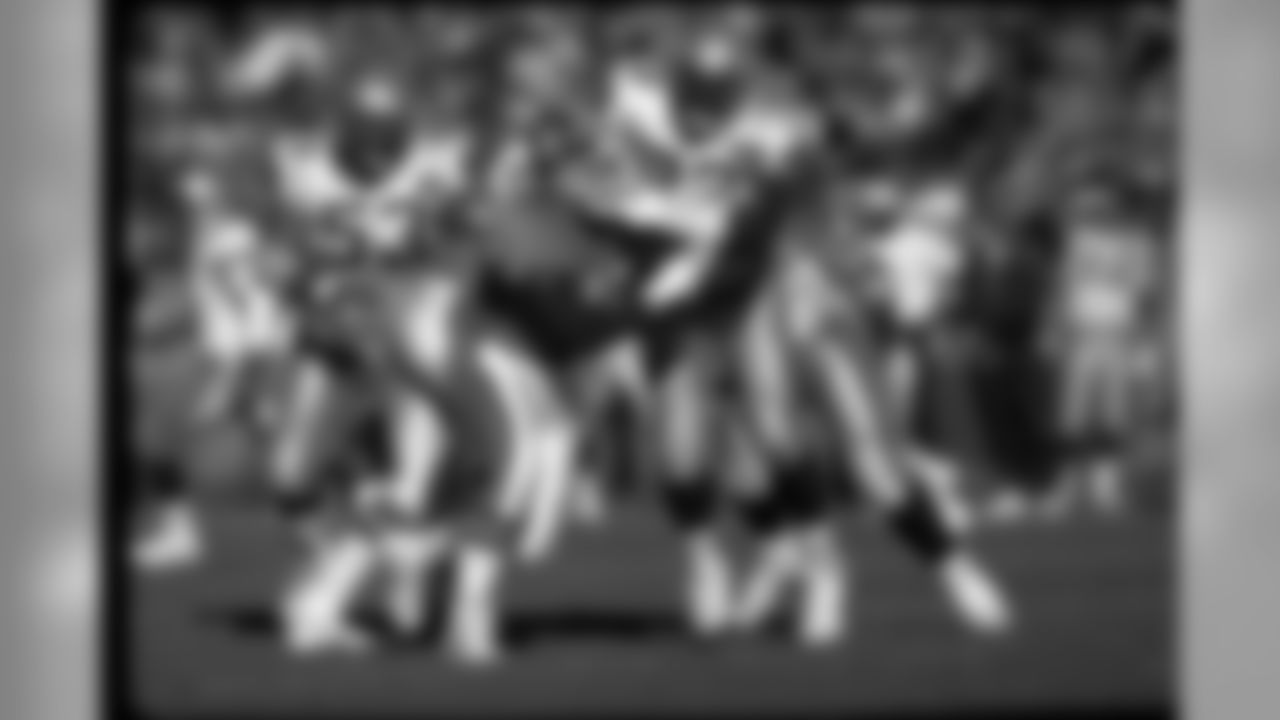
Linebacker Karl Mecklenburg tries to break through a Seahawks blocker during a November 13, 1994 win (17-10) over Seattle at Mile High Stadium.

Linebacker Mike Croel wraps up a Chargers receiver.
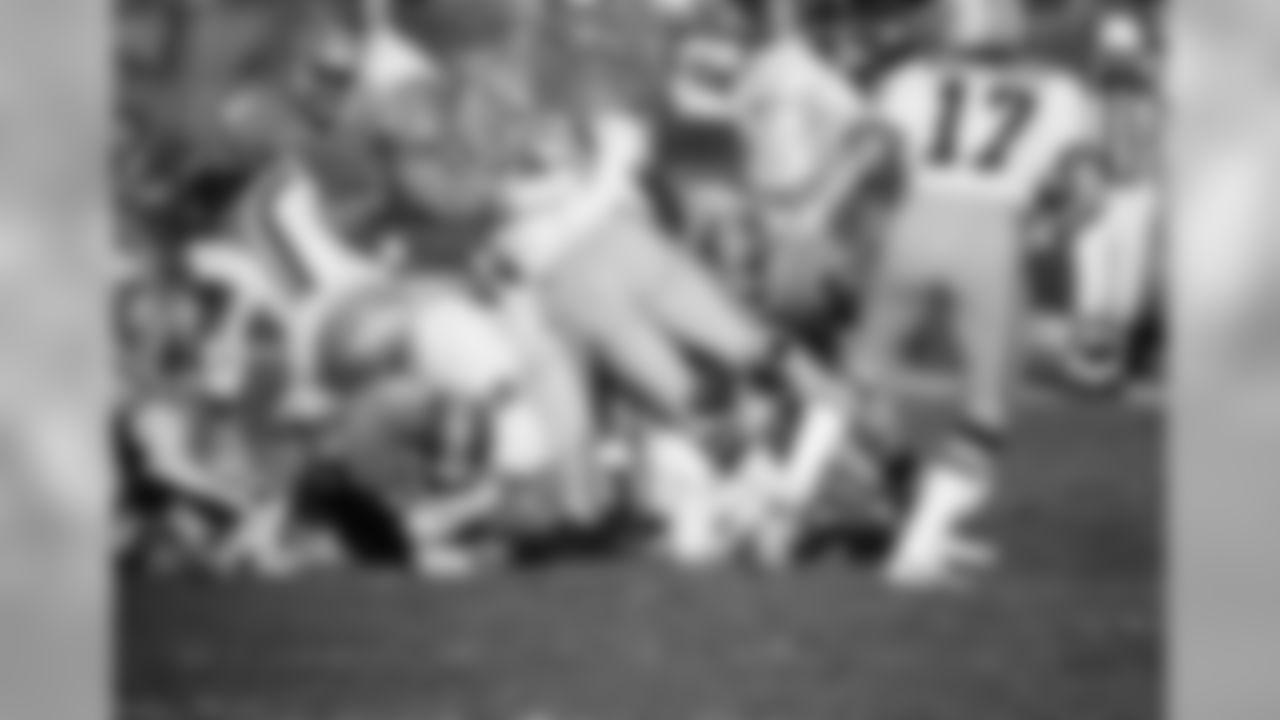
Randy Gradishar (53) of the Denver Broncos leads the defensive surge during a game against the Green Bay Packers on Jan. 11, 1979. Gradishar was chosen as the Associated Press NFL Defensive Player of the Year.

Carl Cunningham poses for a team photo.
The Broncos had never had a winning season before 1973, and it was no coincidence that the team's first winning campaign followed on the heels of the first great draft in team history.
In 1973, Ralston had a great first four rounds, adding a starter with each selection and marking the only time in the history of the Broncos that they added a long-term starter in each of the draft's first four rounds.
The Broncos had the ninth overall pick in the draft and the round one selection was a no brainer as Ralston selected Otis Armstrong, the great running back from Purdue.
Armstrong, a member of both the College Football Hall of Fame and the Colorado Sports Hall of Fame, rushed for 1,000 yards twice as a Bronco and led the NFL in rushing. He was a key member of the offense as Denver began its winning tradition and was a starter in Super Bowl XII.
The Broncos' second round choice, the 36th selection overall, became Barney Chavous, from South Carolina State University.
Barney became a starter for almost the entirety of his 13 seasons in Denver, 1973 through 1985. He was a rock at defensive end, particularly against the run.
In the third round, Denver selected offensive lineman Paul Howard, the 54th pick in the draft, and Howard became a fixture at guard from 1973 through 1986, missing one year due to injury.
And in what arguably was the best overall pick of the draft, Denver selected linebacker Tom Jackson from the University of Louisville in the fourth round.
T.J. became one of the greatest leaders and most popular players in franchise history as a cornerstone of the Orange Crush defense that powered the Broncos to Super Bowl XII in 1977. He was named by his teammates as the team's most inspirational player for six consecutive seasons and had a career long and successful enough that he still was a starter in his last season, when the Broncos again reached the Super Bowl in 1986.
Jackson played 14 years in Denver and his 191 regular season games stand as the fourth-most in team annals. T.J. made the Pro Bowl three times (1977, 1978 and 1979) and was First-Team All-Pro twice (1977 and 1978). Jackson is tied with fellow Ring of Famer Randy Gradishar for the most interceptions by a linebacker in Broncos history with 20.
The Broncos have drafted impact bruisers to hold up their offensive line throughout their history.

Mike Current (1967 NFL Draft - third round, 58th overall) lead blocks for Floyd Little. Current spent a little over eight years with Denver, starting in 105 of 108 games as a Bronco, with one season as a Pro Bowl selection.

George Goeddeke (1967 NFL Draft - third round, 59th overall) played for six years in the NFL, all with the Broncos. A one-time Pro Bowler, Goeddeke started in at least 55 of 66 career games.
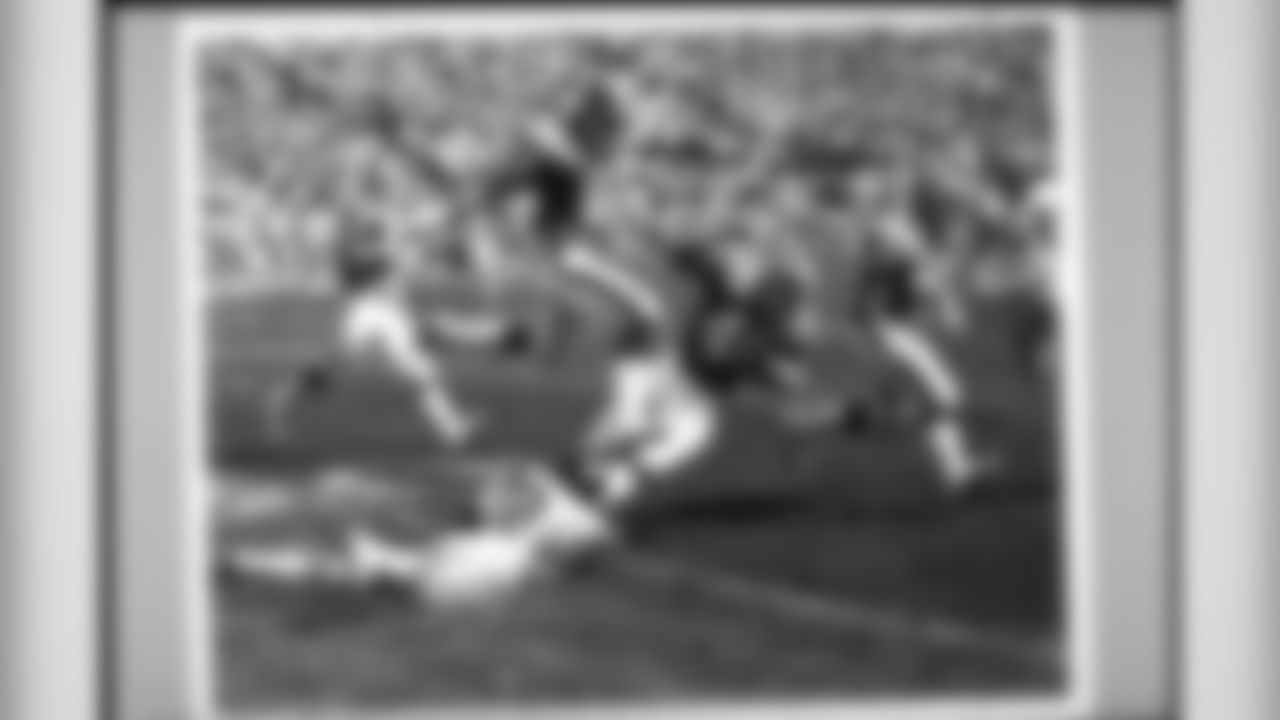
Paul Howard (1973 NFL Draft - third round, 54th overall) leaps over an opponent to try to make a block down the field. Howard played for 13 years in the NFL, all with the Broncos, starting in at least 147 of 187 career games.

Claudie Minor (1974 NFL Draft - third round, 68th overall) moves at the snap to make a block. Minor started in 123 of 125 career games with the Broncos over his nine-year career, all spent in Denver.

Tom Glassic (1976 NFL Draft - first round, 15th overall) looks on from the sidelines during a preseason game against the Los Angeles Rams in 1982. Glassic played eight years in the NFL, starting 92 of 105 career games.
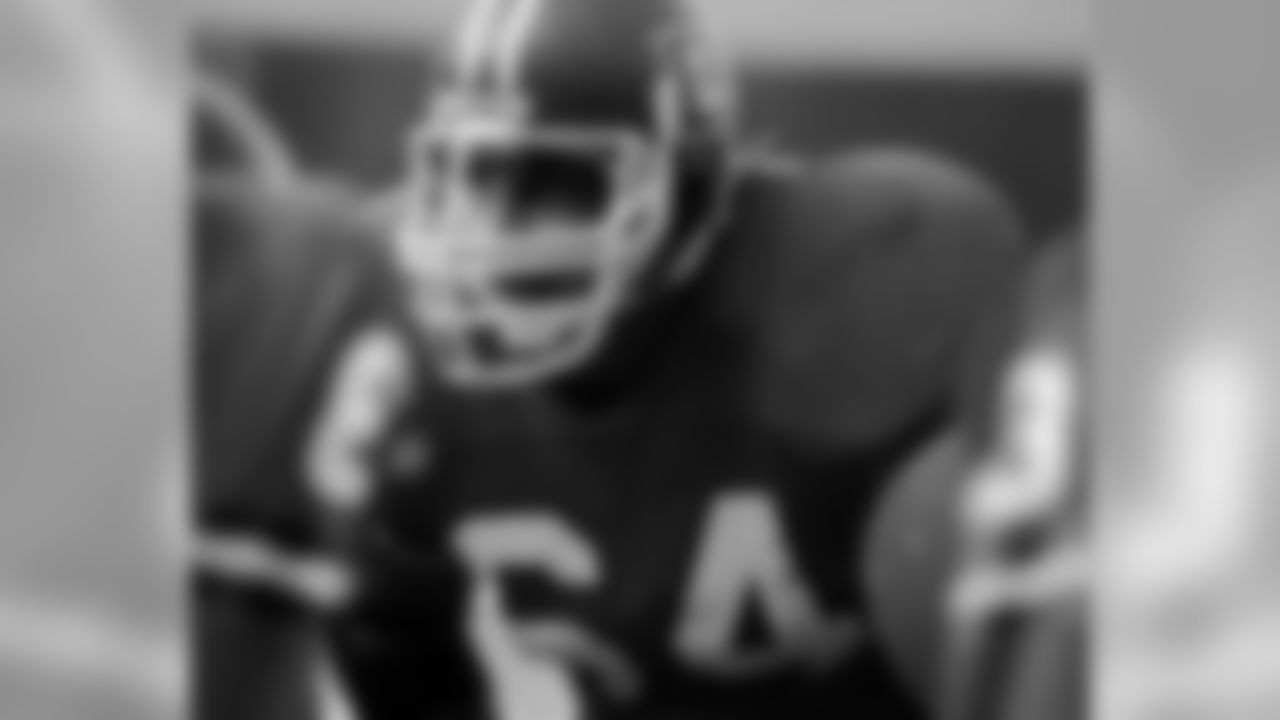
Center Bill Bryan (1977 NFL Draft - fourth round, 101st overall) listens in a huddle during a game against the Los Angeles Raiders in 1982. Bryan spent his entire 12-year career with the Broncos, starting in 151 of 153 games.

Center Keith Bishop (1980 NFL Draft - sixth round, 157th overall) blocks a Washington defensive lineman in 1988. Bishop started 87 of 129 career games as a Bronco and was a two-time Pro Bowler.

Ken Lanier (1981 NFL Draft - fifth round, 125th overall) reaches to make a block on a pass rusher. Lanier played all but one year of his 14-year career with the Broncos, starting 165 of 177 games.

Guard Doug Widell (1989 NFL Draft - second round, 41st overall) shuffles to his right after the ball is snapped. Widell played eight years in the NFL, his first four years coming in Denver. He started in 58 of 64 games as a Bronco.
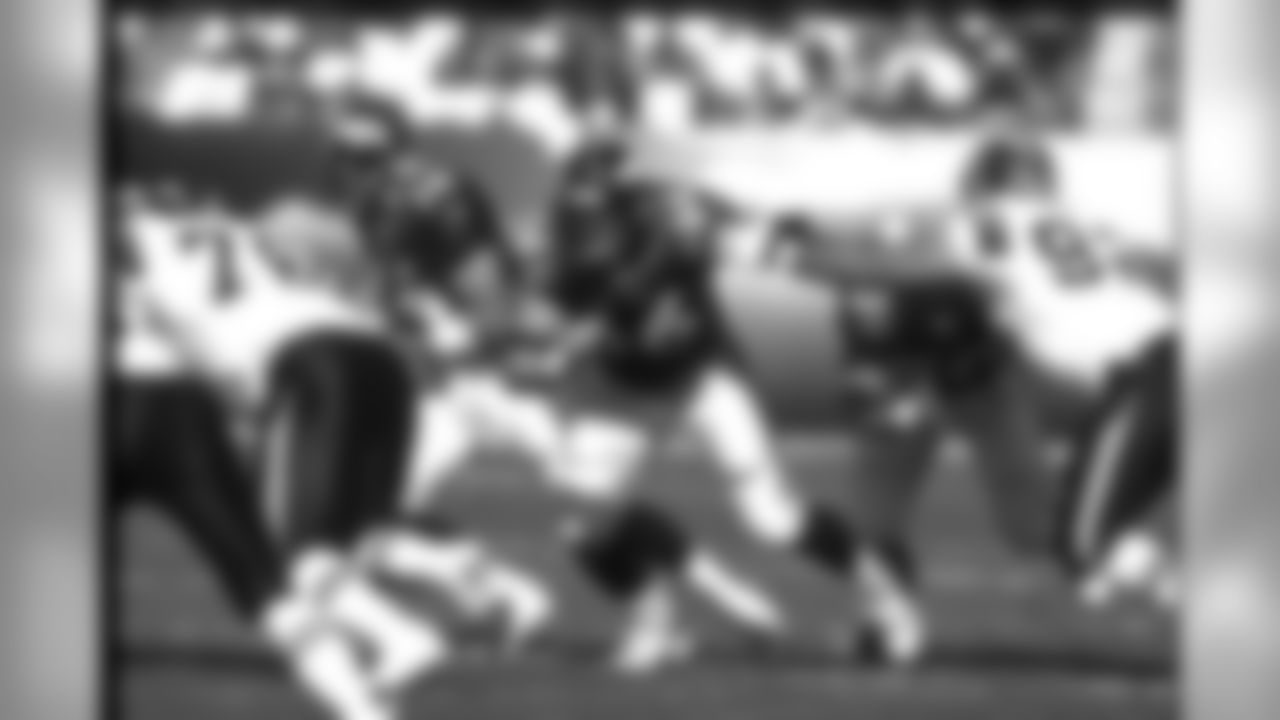
Tom Nalen (1994 NFL Draft - seventh round, 218th overall) moves into position to block against the Chargers in 2002. Nalen, a five-time Pro Bowler and two-time First-Team All-Pro, played 14 years with the Broncos, starting 188 of 194 career games, all with Denver.
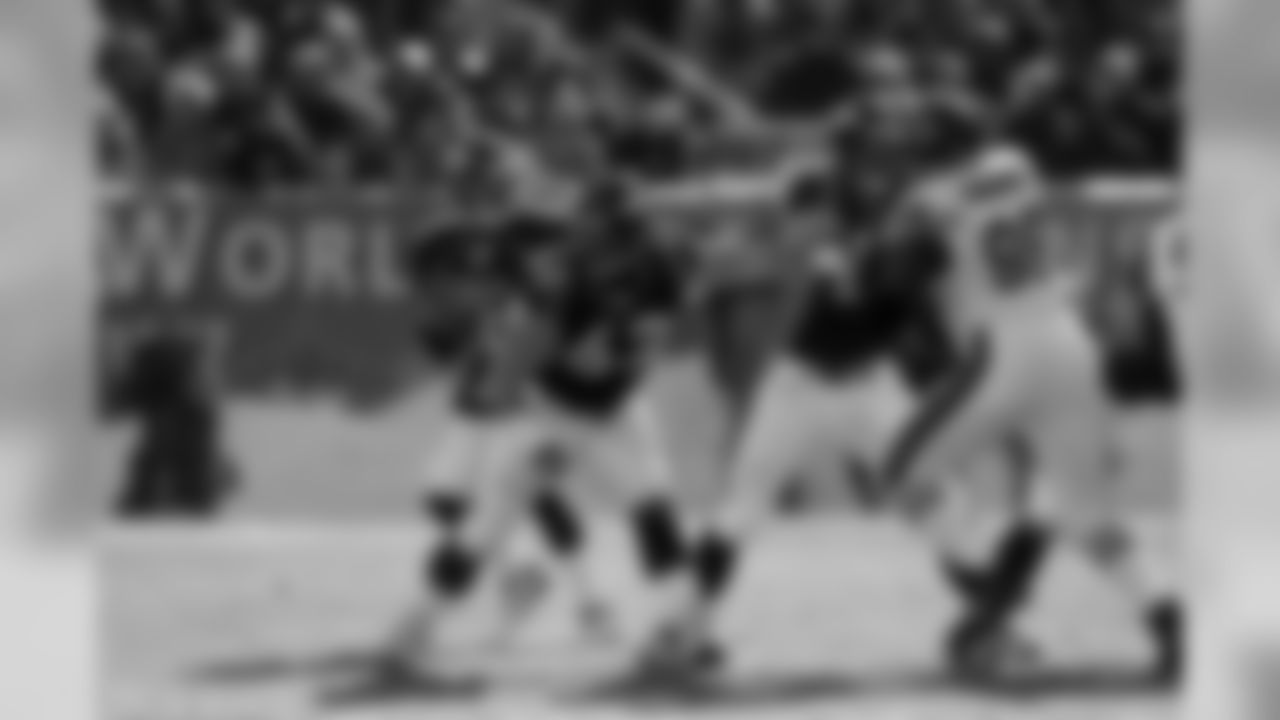
Dan Neil (1997 NFL Draft - third round, 67th overall) looks to protect the quarterback in a game against the Bears in 2003. Neil played eight years with the Broncos, starting 104 of 108 games.

Cooper Carlisle (2000 NFL Draft - fourth round, 112th overall) makes a block against the Seattle Seahawks in 2003. Carlisle played seven seasons with the Broncos and 13 seasons total in the NFL. As a bronco, he started in 38 of 95 career games.
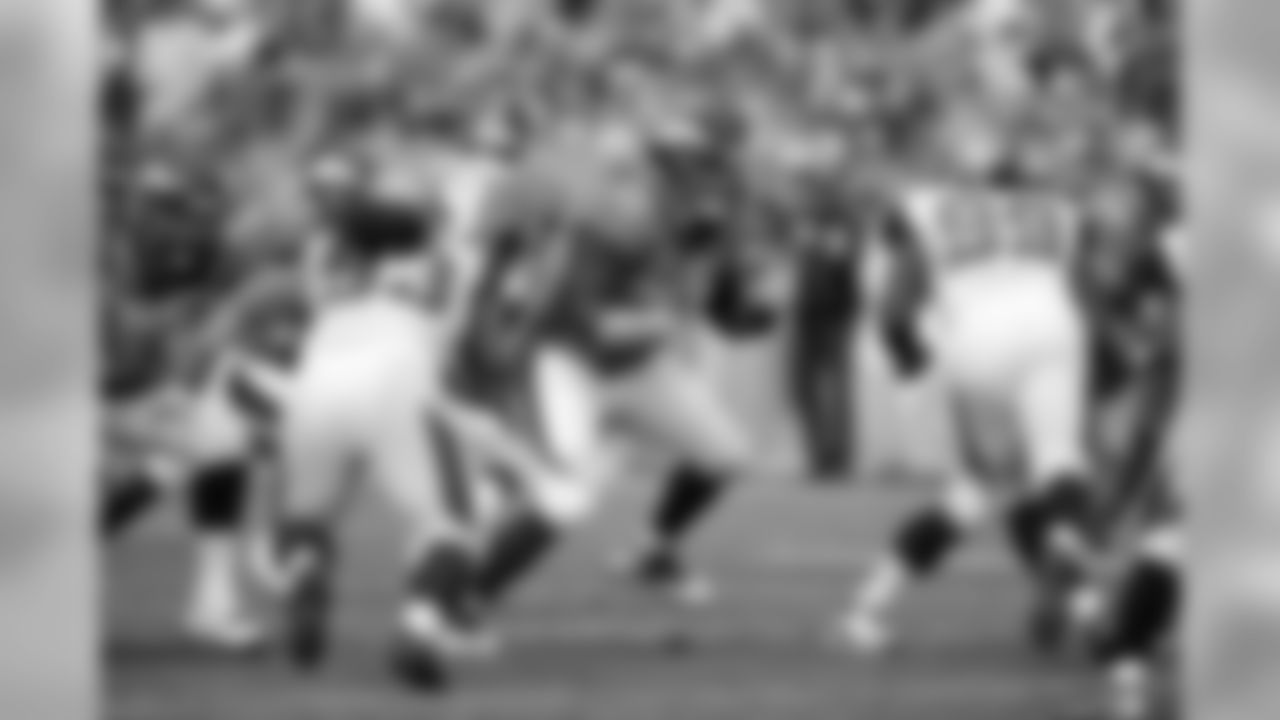
Guard Chris Kuper (2006 NFL Draft - fifth round, 161st overall) prepares to block an oncoming Jaguars defensive lineman. Kuper started in 79 of 90 games as a Bronco in his eight-year career.

Ryan Clady (2008 NFL Draft - first round, 12th overall) blocks the 49ers defensive line. Clady, a four-time Pro Bowler and two-time First-Team All-Pro, has started in each of his 98 career games, all with the Broncos.

Zane Beadles (2010 NFL Draft - second round, 45th overall) prepares to block a Tennessee Titans lineman in 2013. Beadles, now with the Jaguars, spent his first four seasons with the Broncos, starting in 62 of 64 games with Denver.

Orlando Franklin (2011 NFL Draft - second round, 46th overall) steps out looking to make a block downfield. Franklin, now a Charger, played his first four seasons as a Bronco, starting each of his 63 games.
Four rounds, four long-term starters who all were vital cogs in the growth of the franchise from one that had never had a winning season to one that has now made seven Super Bowl appearances and is regarded as a crown jewel among National Football League clubs.
And now, we embark upon a new draft in advance of a new season, but the standards and expectations of excellence remain the same as they have been since that first winning season in 1973 and that first Super Bowl year of 1977.
We have certainly had many great players over the years, but the 1973 draft remains the only one to produce that many long-term impact players among the selections taken in the first four rounds, but without a doubt, John Elway is looking to match and exceed that standard in the 2015 draft.














